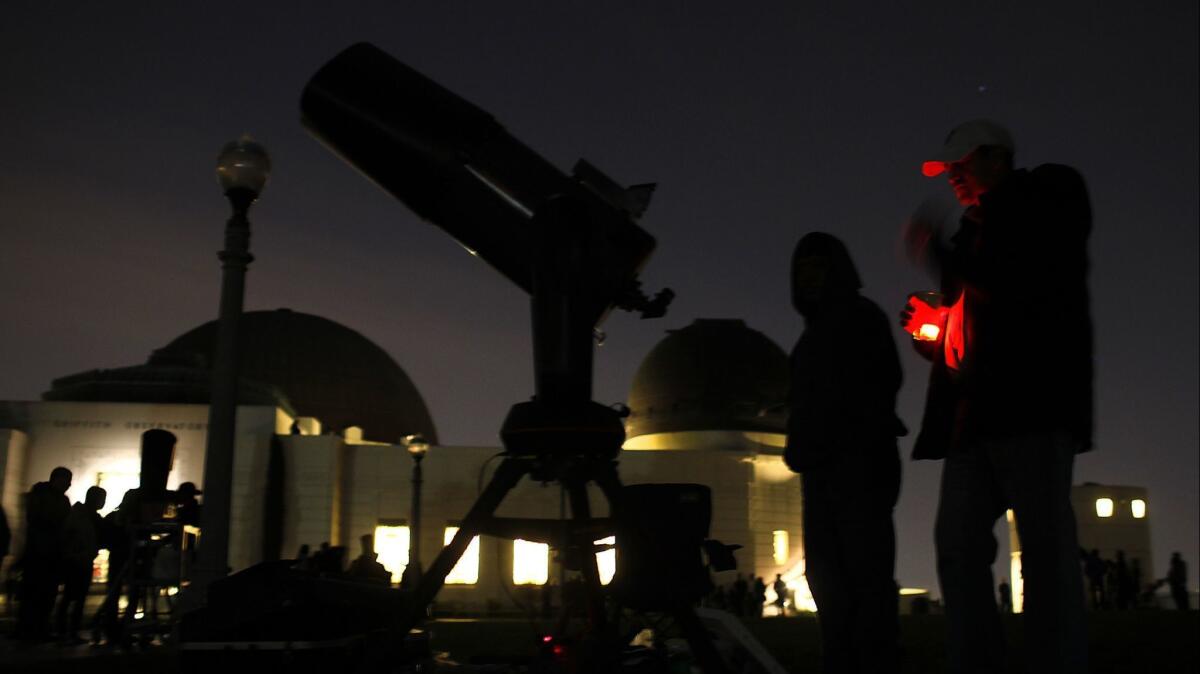Don’t miss Mars at its brightest in 15 years. L.A.’s Griffith Observatory will host a free viewing party

- Share via
Mars will be at its brightest in 15 years when it comes closest to Earth in the wee hours Tuesday. You should be able to look up at the night sky and see it with the naked eye, provided there’s no cloud cover.
If you catch Mars around 12:50 a.m. Tuesday, it will be just 35.8 million miles away. The next time the red planet will be this close to Earth isn’t until 2035.
To mark Mars’ big moment, Griffith Observatory in Los Angeles will host a free viewing party 10 p.m. Monday to 2 a.m. Tuesday. The grounds (not the buildings) will be open, and telescopes will be placed on the lawn for those who want a closer look.
“Mars will be at its very best position for viewing through a telescope from Los Angeles, as it crosses the meridian and appears highest in the southern sky,” the observatory’s website says.
The Chabot Space & Science Center in Oakland also is throwing a viewing party. It runs from 10:30 p.m. Monday to 2:30 a.m. Tuesday when telescopes and Mars-related activities will be available to visitors. The cost is $8 per person.
Don’t worry if you miss Mars at its closest point. It will continue to appear bright in the night sky until Aug. 3. (Don’t be fooled by what’s being called a viral hoax that says Mars will be as bright as the moon this weekend. It’s not nearly as big as the moon, for starters.)
Mars will reach what’s called opposition — a time when Mars, Earth and the sun align in their orbits to form a straight line — on Friday, according to Space.com.
Some lucky stargazers will witness the longest lunar eclipse of the 21st century.
“On Friday, the moon will be fully engulfed in the heart of Earth’s shadow for 1 hour, 42 minutes and 57 seconds,” an L.A. Times story said. Unfortunately, it won’t be visible in North America, but you can stream it live at timeanddate.com.
Twitter: @latimestravel
More to Read
Sign up for The Wild
We’ll help you find the best places to hike, bike and run, as well as the perfect silent spots for meditation and yoga.
You may occasionally receive promotional content from the Los Angeles Times.







